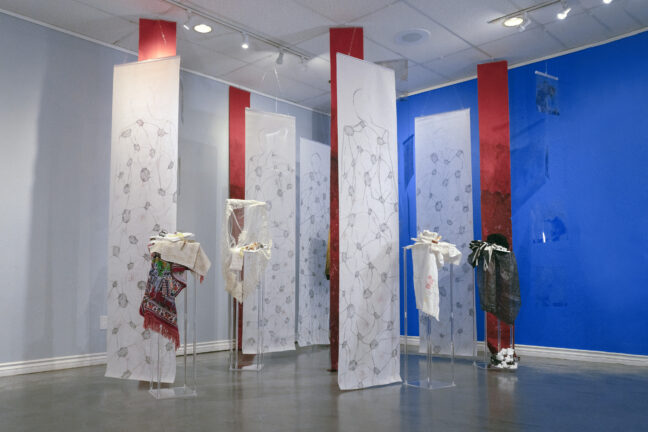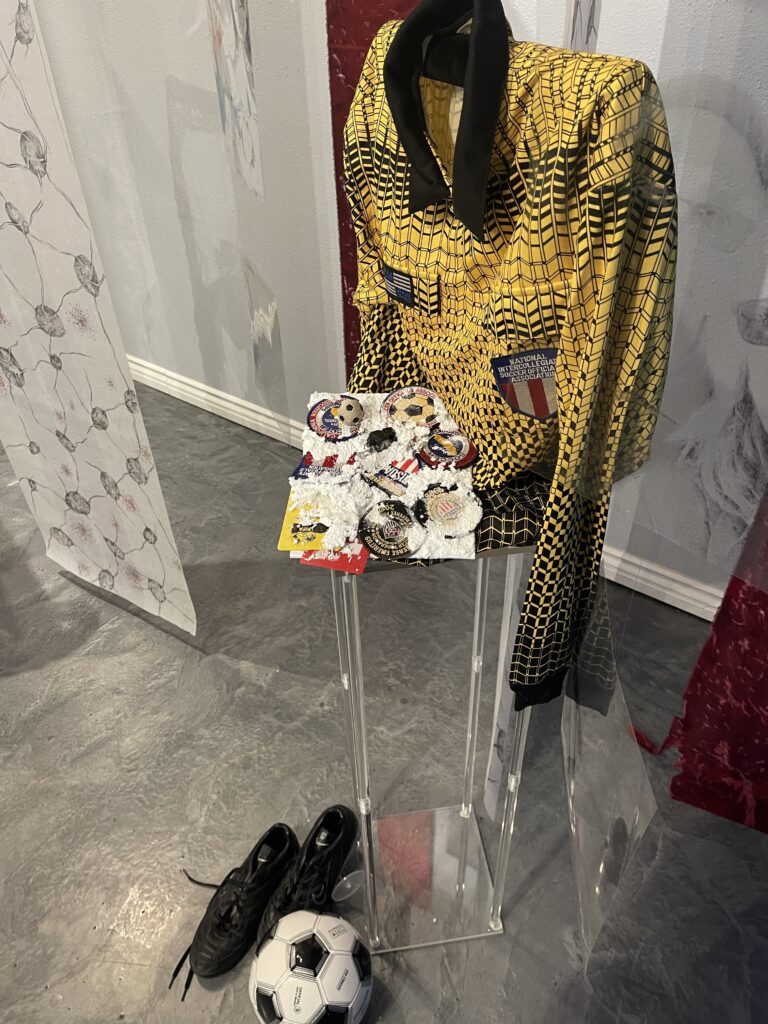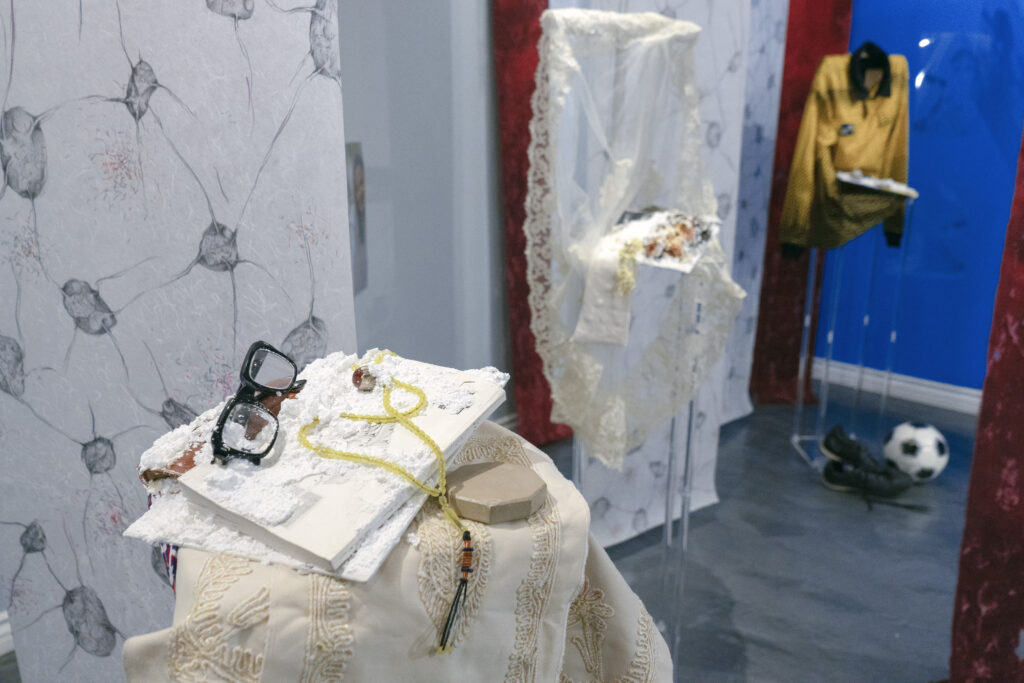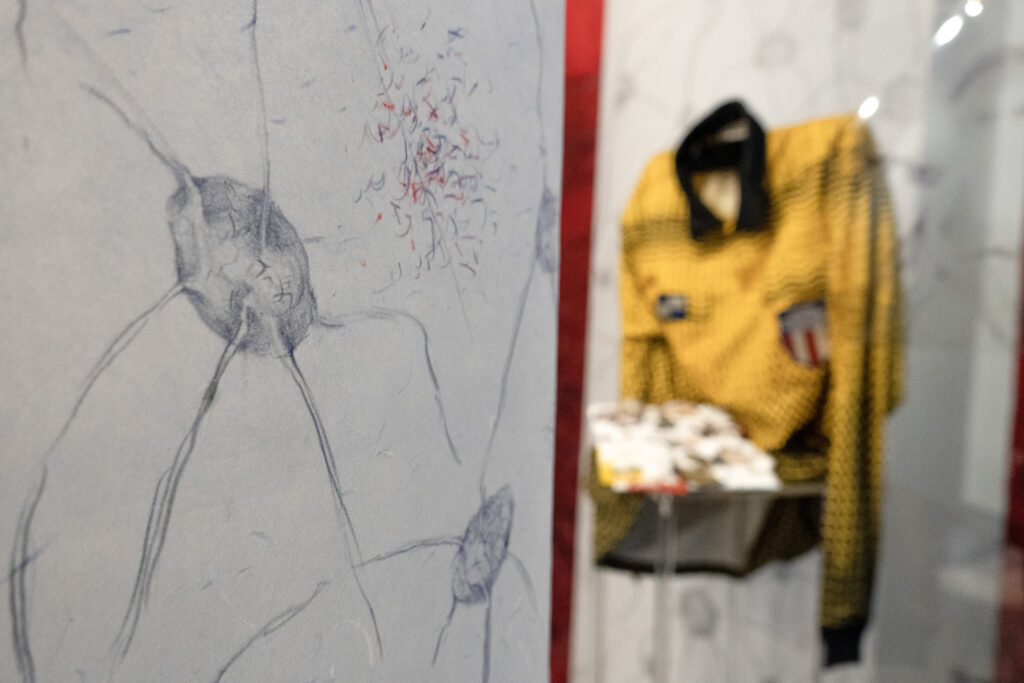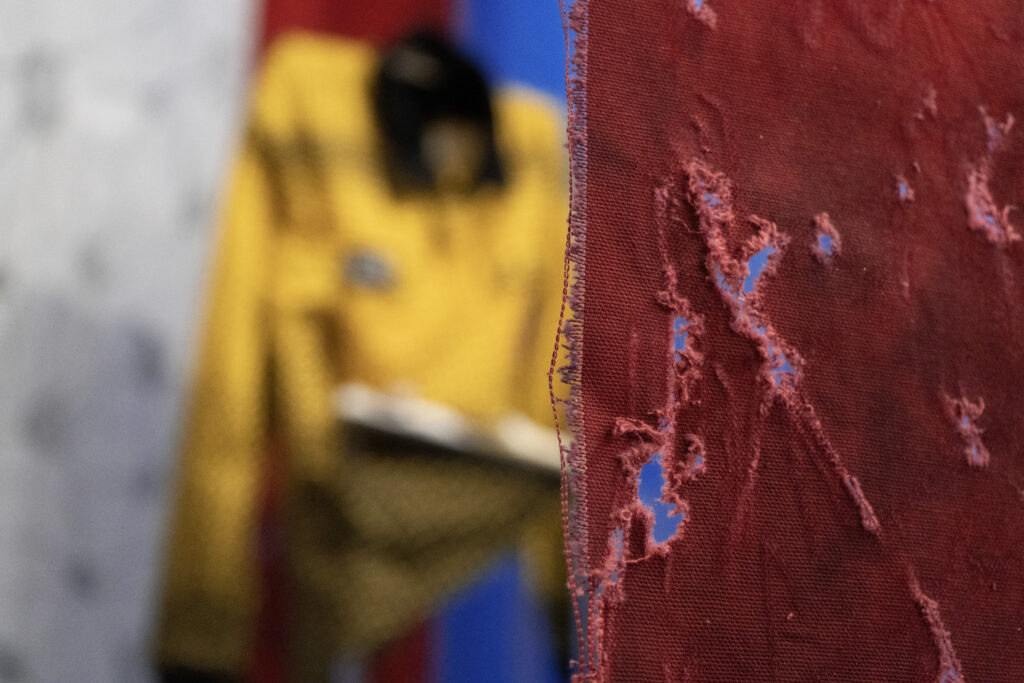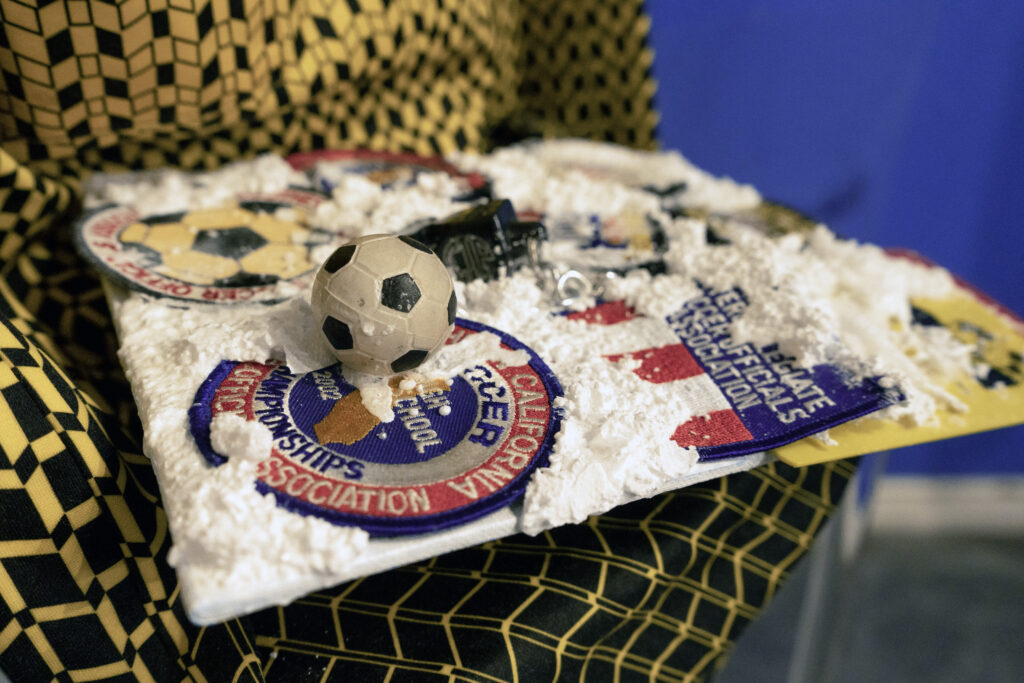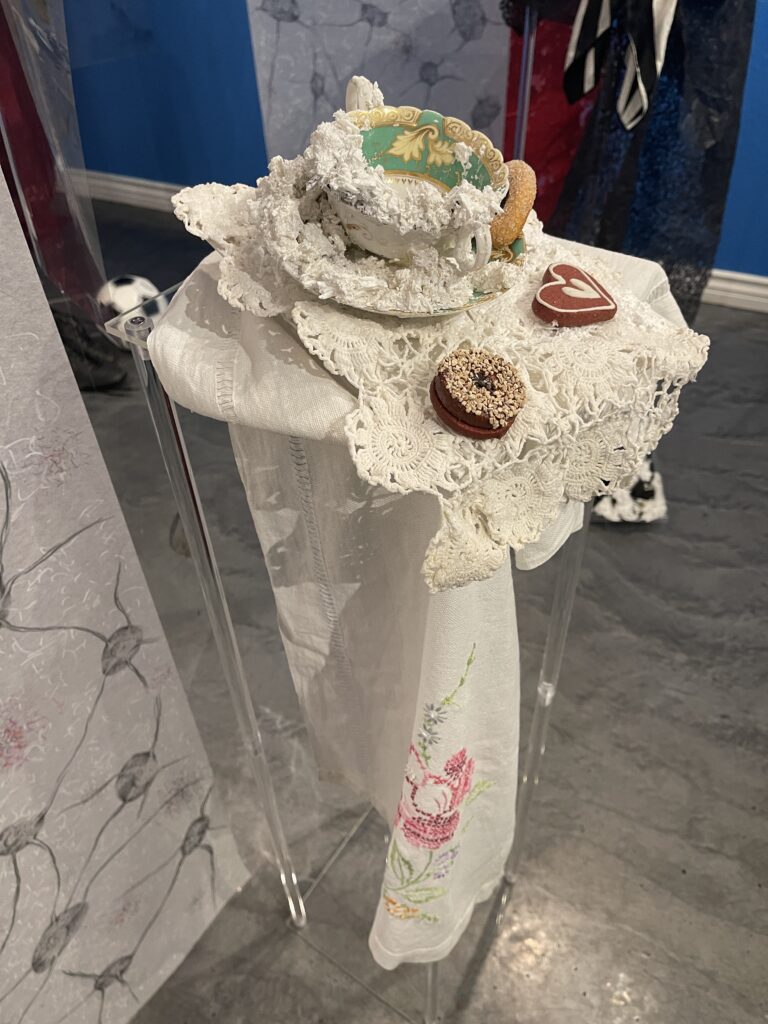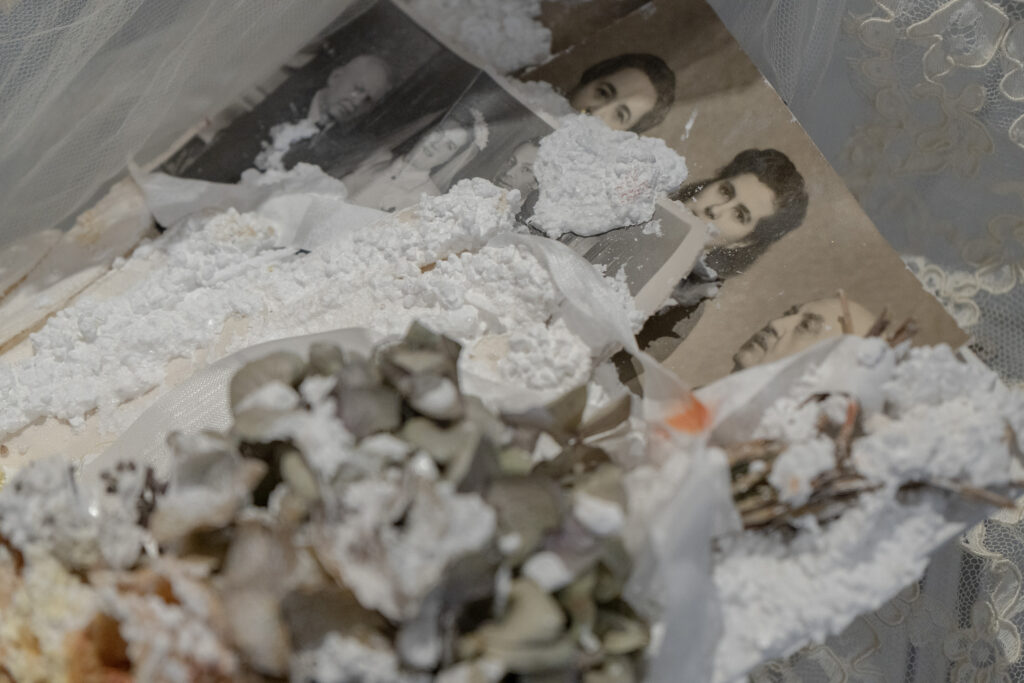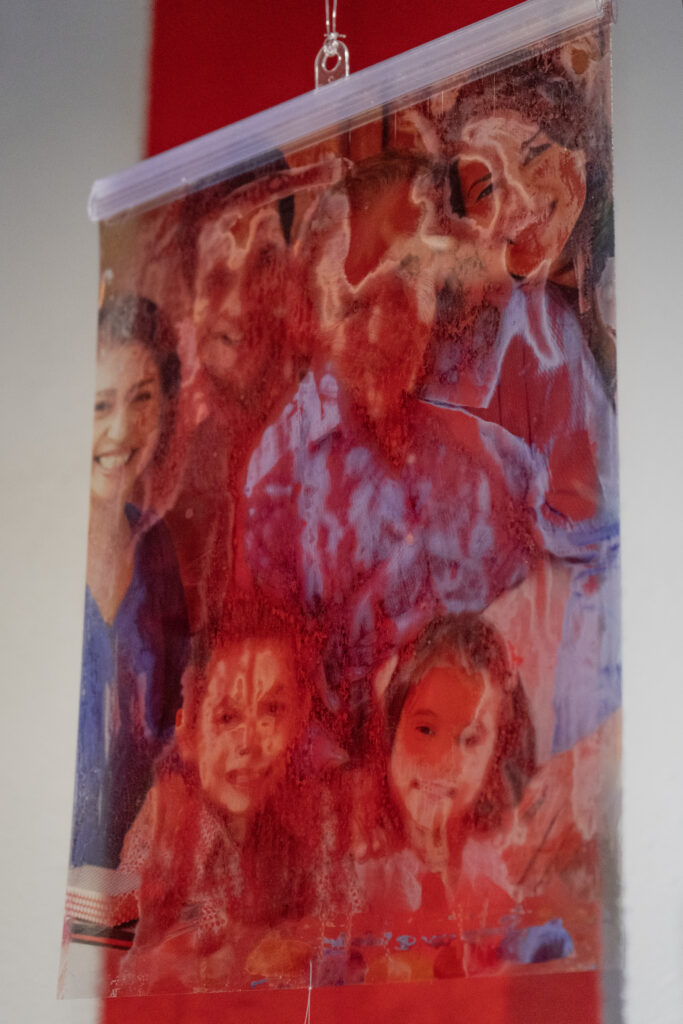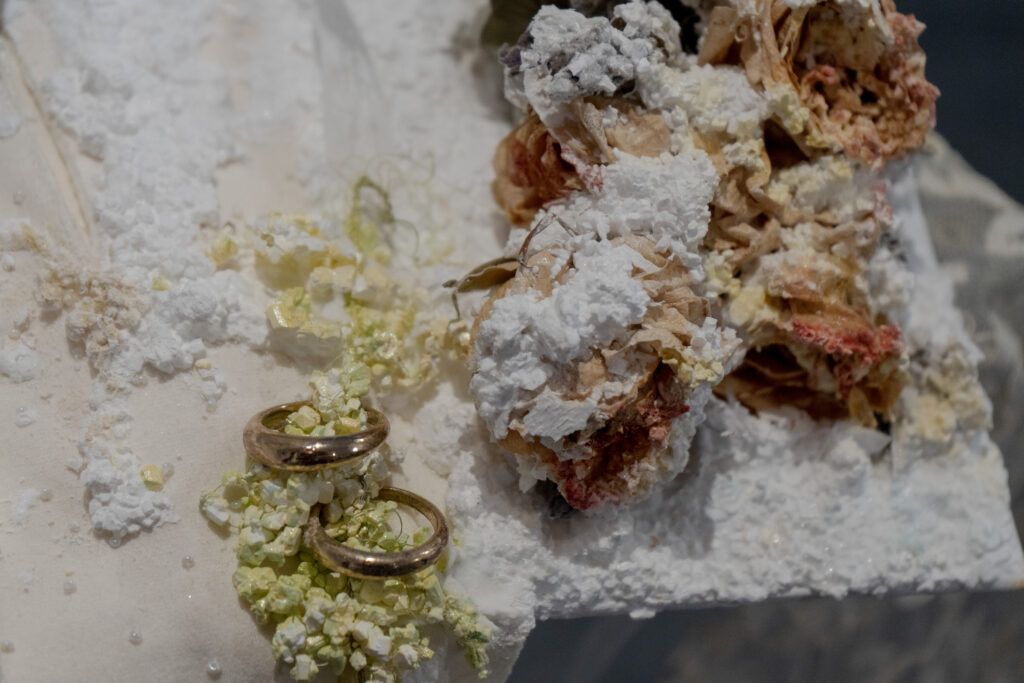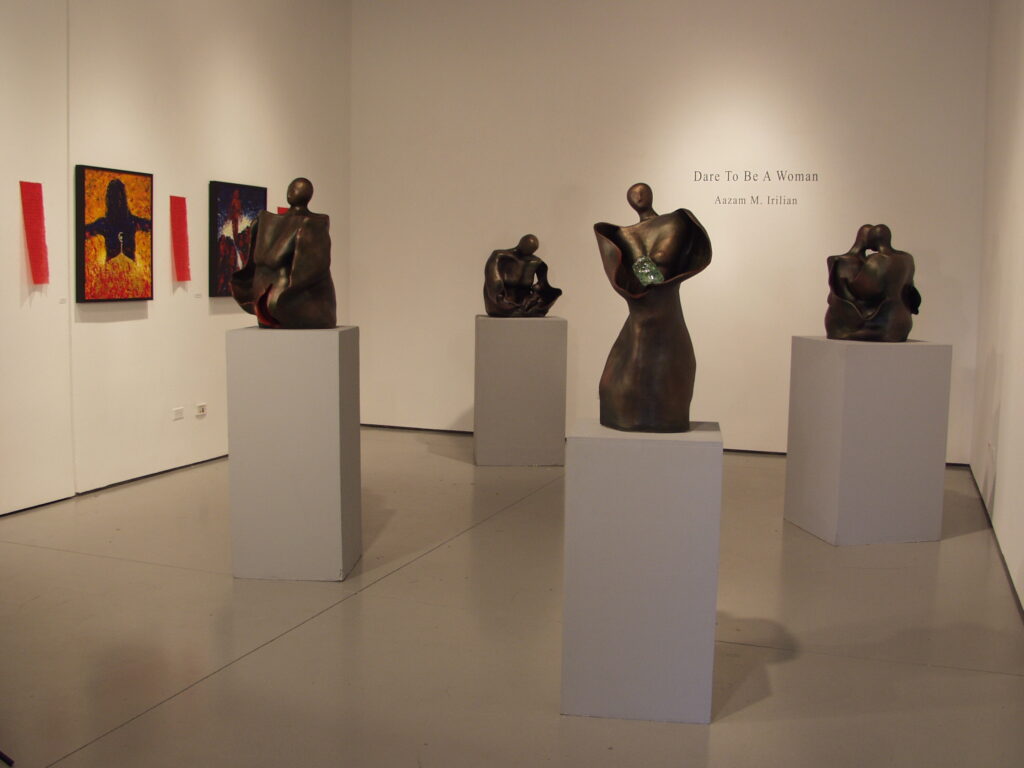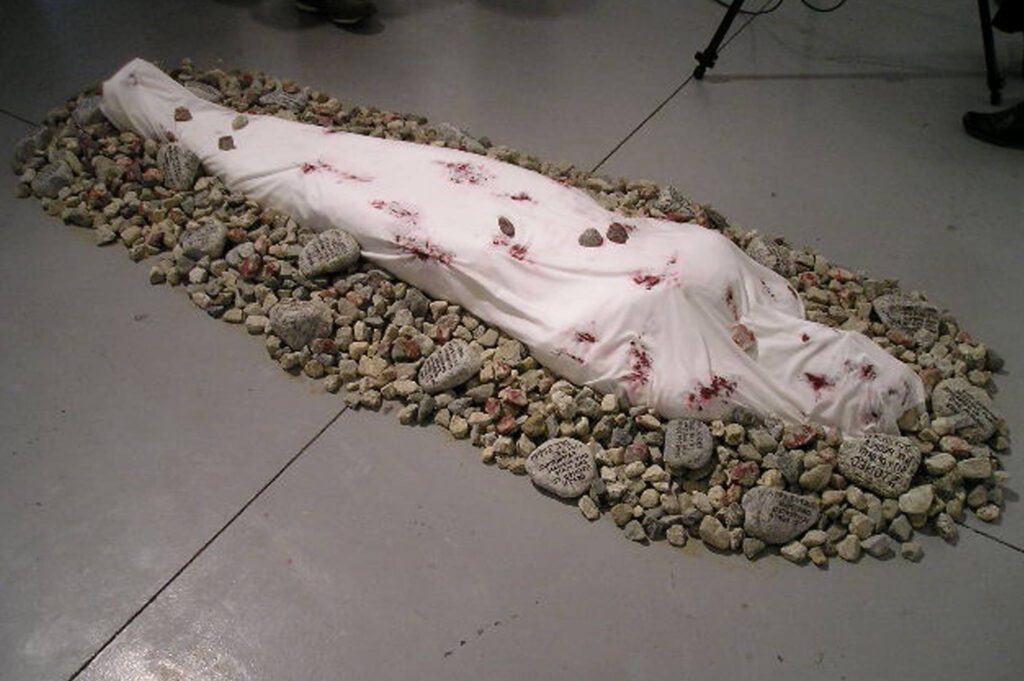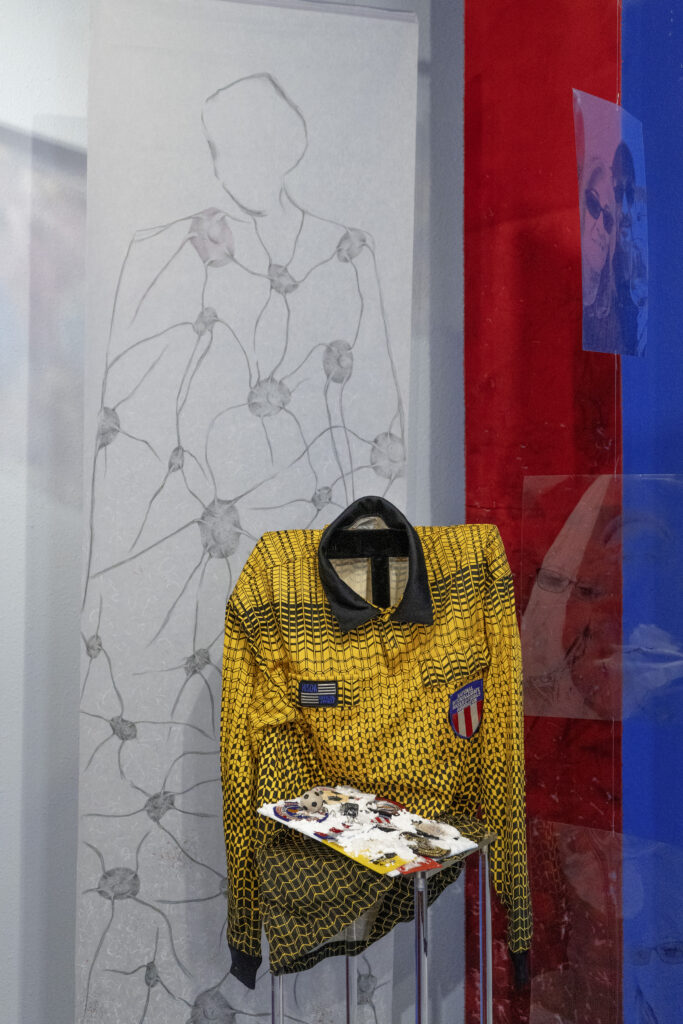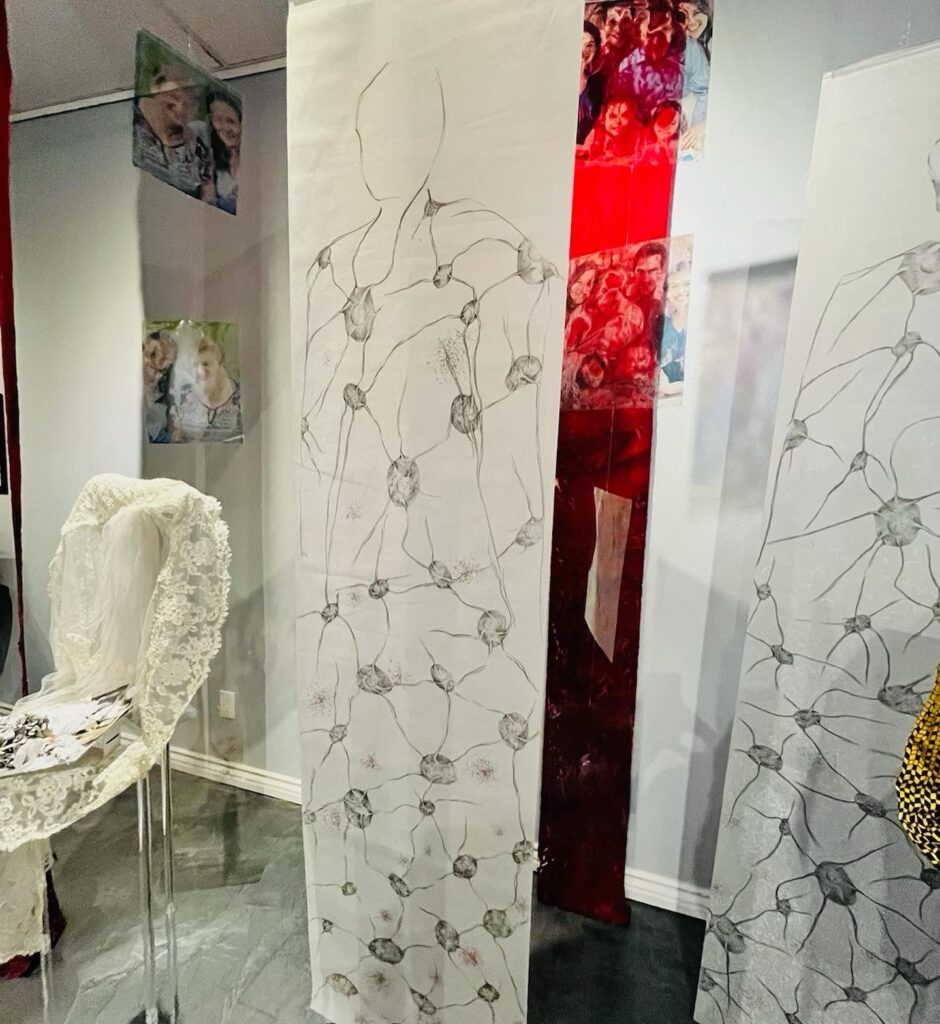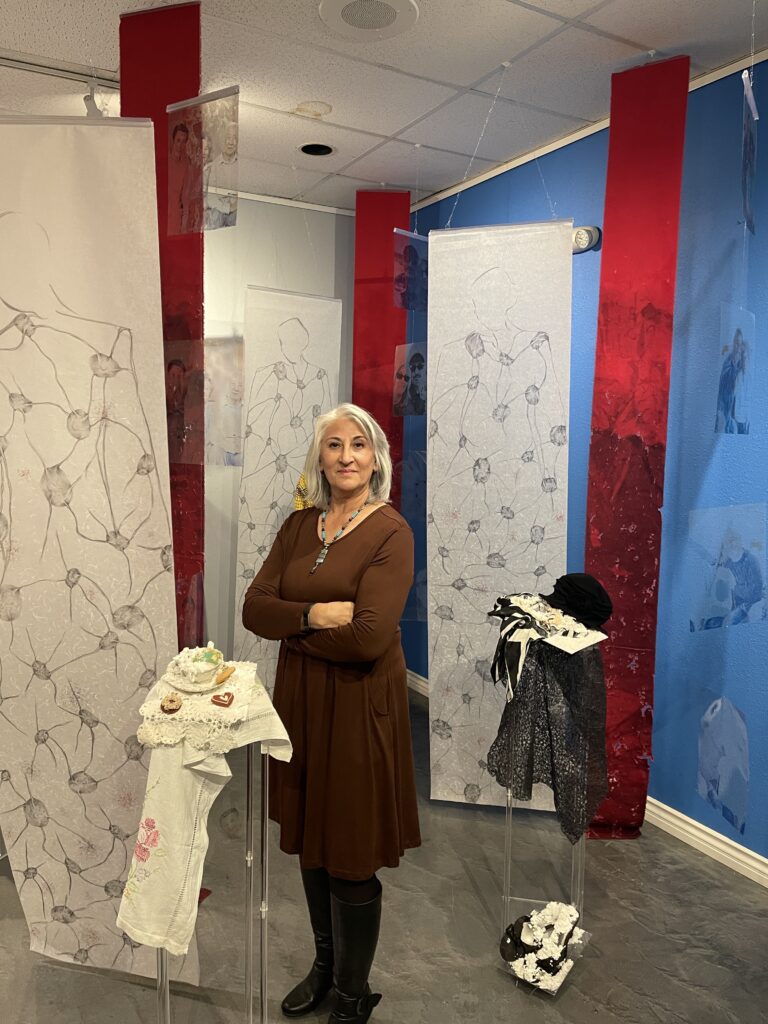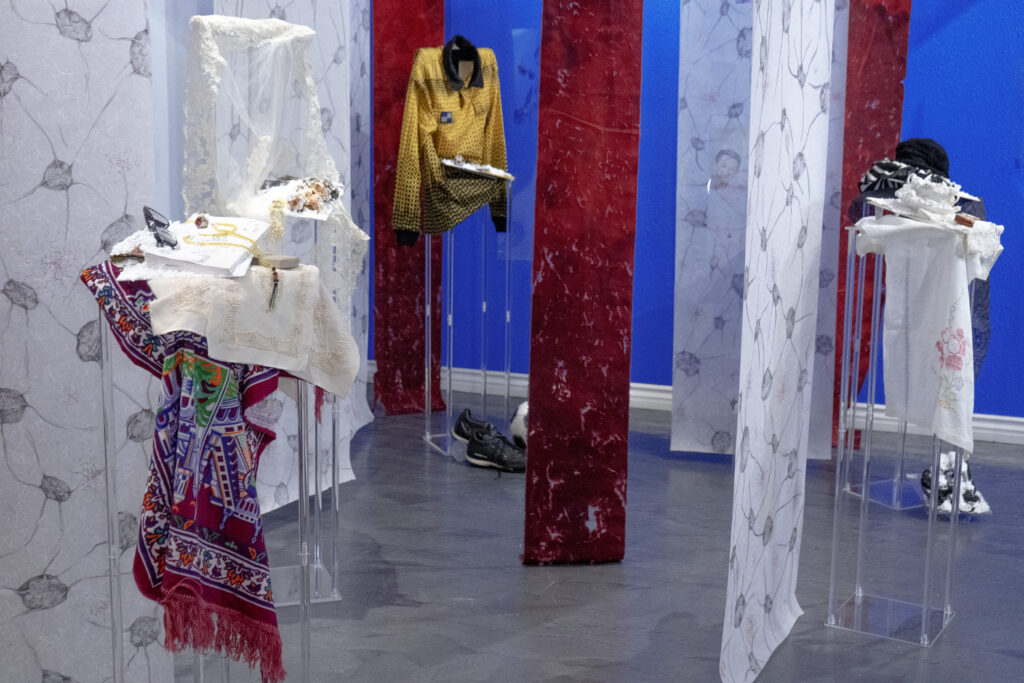Playful, provocative, grand, and just plain fun – that’s Playground at the Abandoned Chapel. This is his first solo exhibition at Walter Maciel Gallery. Serbian born/Southern Californiabased artist Vojislav Radovanović previously exhibited a variety of works at the gallery’s fine Future Patchwork, a group exhibition curated by Annie Seaton last summer.
Before describing the wonders of this Playground, it’s more than worth noting that it is a big departure from the artist’s delicate, spiritual, almost ethereal work in a solo exhibition at Diana Berger Gallery, ORNITHOMANCY, with its almost-holy references to nature, the universe, and the spiritual. In that exhibition, color palette often focused on silver, blue, grey, black, and mirrored or liquid surfaces. But it, too, like this exhibition, featured a mixed media exploration of both human light and darkness.
Playground at the Abandonded Chapel offers a wild circus ride of color and desolation combined, one that reflects Radovanovic’s recent year-long desert residency at the Museum of Art & History in Lancaster. His love for both the dusty landscape and broken or abandoned structures — so many dreams come to the desert and fade away – shows in these works. So, too does his fascination with a specific old gym, the remains of a burnt-out school, it’s arches chapel-like, but covered with vivid graffiti, discards, and trash.
That specific setting is used in a site specific video projected in the back gallery, with scattered toys and discarded objects like computer parts and safety cones strewn on the floor in front of the projection. The viewer is invited to watch both the projection unfold and how its images look when viewed through or around these objects, adding a vibrant textural and sculptural element to the video.
The video itself stars playright and performing poet Robert Patrick, in a tour de force performance singing and reciting his own poems and excerpts from an unpublished play. Whether viewers start with this experience or conclude their visit to the gallery with a view, it serves as a perfect background to the acrylic paintings in the main room.
The main gallery also includes site-specific elements, such as the pink arches painted on the gallery’s white walls, reflecting the form of the abandonded gymnasium depicted in the video. The acrylic paintings themselves are fantasy personified, but grounded in themes of redemption, the kind that can only be achieved by reconciling losses and finding new meaning through them. It is a glorious vision, filled with both whimsical elements and darkness.
There are strong references to the war-torn backdrop of his Serbian childhood in the former Yugoslavia, as well as to consumerism, political anger, personal anguish, and the relentless march of history. How do we reconcile the childhood innocence of toys and play with the detritus of war? How do we reshape our own destiny after loss, after childhood innocence is forced to end?
Referencing the often harsh reality of the Southern California landscape – from wildfires to climate change, as well as the rubble of war, and the personification of ourselves, our battles, and our hopes and fears, the visual subject may be toys, but the themes are much deeper. Godzilla, clear plastic robots, an accordian-playing monkey clown, and more fill canvasses as intricate, ominous and absorbing as any dark fairy story. The brilliant pinks, greens, oranges, and blues belie clouds of smoke and broken buildings.
“…and That’s How it Happened,” is a truly wonderful work, in which a grinning clear robot toy looks on at a simply, thickly painted depiction of money going down a housefront that also features a fast-food burger, and a camera. The “end” of this visual story is this: a house broken asunder, a rainbow of dark smoke issuing from it, a bird escaping from it, a small rainbow horse looking on. This disaster may have begun on a child’s playground, but it concluded in real loss and corporate greed.
“And now a word from our new spokesperson, Richard, with breaking news” features a two headed red T-Rex monster with a post-it note reading “Breaking News.” Another post-it reads “Only philosophy can save you now.” It’s funny and horrible and true – likely coming soon to TMZ.
Some of my favorite works are perhaps the softest: in the large-scale triptych “Europa,” a blonde cherub in circus garb rides a blue rocking-horse-like pony through a sky filled with stars. She is the central figure in the triptych, the two sides of which feature silhouettes of a helicopter and an airplane, both toys and ominous fellow residents of the sky in which she rides.
“Everyday Balancing Act” gives us a muscular strong man riding a white horse balanced on a striped ball across a golden wire. Clouds rise in ghostly puffs around a foggy grey mountain backdrop. This may be a very brave man, playfully conquoring a desolate landscape, or it is simply the way we all live, day in and day out, on the precarious edge of getting by. “Star Wrangler” is just that – a lavendar-clad cowboy lassoing stars, gracious, happy, riding his horse with aplomb. Be the star wrangler.
This is exciting, resonant, fascinating work, an exhibition one can breeze through and simply enjoy for the colors, the toys, the embedded collage elements; or one in which you can consider its implications, the fears for humanity, the hope for the future, the joy and the terror that happens on playgrounds, in war, and in life on this planet, in this city, in its lost desert dreamscapes, today.
Go see it and consider how this world plays. The exhibition runs through February 25th. Gallery hours are Tuesday-Saturday, 11-6.
- Genie Davis, photos provided by the artist, and Genie Davis
























